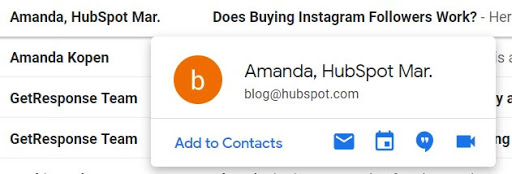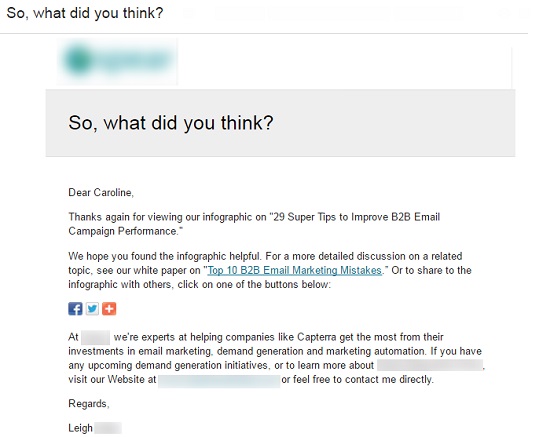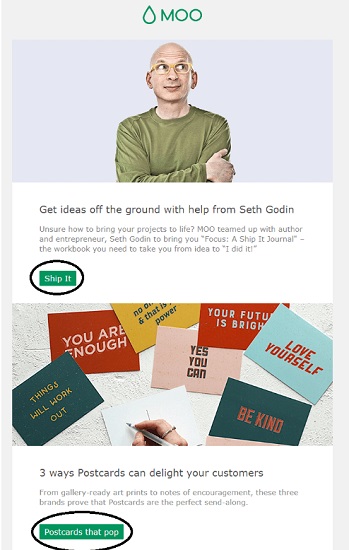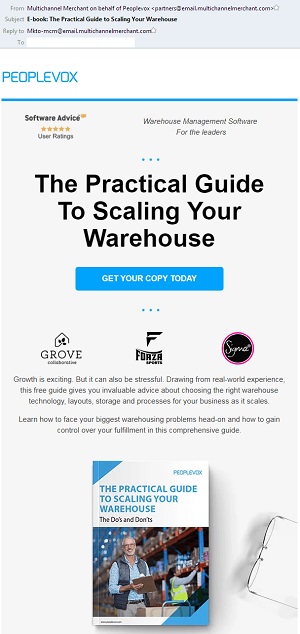8 Tips You Need to Know to Build Effective Sales Emails

Statistics and research prove the fact that email is still the best performing channel to communicate with business partners – and gain new contacts and contracts. But, if you are working in the B2B sector, you are probably familiar with the common pain of creating email marketing campaigns that are really able to generate sales.
We examined the situation on the ground in B2B email marketing, and formulated 8 basic tips to improve sales emails and gain new clients. Yes, it still demands time and resources, but these recommendations will help you to build a foundation for email campaign success.
Let’s get started:
- Business email and sender name are solid
- Subject line matters: Avoid standard introductions
- Be a problem solver
- Personalization works
- Let people know you know them
- Send follow-ups
- Add a call-to-action button
- Make sure it is well-designed
1. Business email and sender name are solid
We cannot understate the importance of using a proper business email address and sender name for email engagement.
What is your top priority goal during your first contact with email recipients? To make the best impression and show that you are a trusted and reliable partner. This is your chance to be chosen from among the competitors.
That’s why you should use a real name, not a nickname, as well as a business email address that includes the actual name of your company.
68% of email recipients decide whether to open the email by the sender name. Moreover, your business email address and sender name act as advertisements to improve brand awareness.
You can create a business email account via G-suite by Google. Or buy it from your hosting provider.

2. Subject line matters: Avoid standard introductions
The subject line is maybe the most important part of your email because 35% of recipients will open inbox messages based on it. That’s why open rate decreases drastically when subject lines are spammy or boring.
But if you craft the subject line well, it can have an amazing effect.
A best practice is to personalize subject lines. Include the recipient’s name – this is a gesture of politeness and adds a personal touch. Moreover, this lets prospects know that you are familiar with their company, not a spammer sending messages to everyone.

Another crucial aspect is the length of the subject line. The best time-tested practice is up to 30 characters’ limit, because today, emails are often opened on mobile devices.
If you want, use the subject line to ask a question. It should be clear, simple and short to pique the recipient’s curiosity.
Avoid sensational subject lines like “Stellar chance!”, “Hurry!” and so on – B2B style demands a much more moderate approach. It’s also not the place for ALL CAPS and jargon. Shouting and chaos aren’t going to convince your leads to open their wallets.
3. Be a problem solver
Before crafting your email campaign, what is the first thing you should do? Identify the problem or pain point of potential business partners. Then, your email can present them with an actual proposition of how to solve the problem. It’s pretty simple.
Look at the email below. It’s a good example of a relevant message delivered right: Hoovers mentions one of the recipient’s biggest problems and goals – creating performing subject lines – and immediately offers the solution, while describing it in detail.

4. Personalization works
We’ve already mentioned the importance of using names in subject lines. This is the mantra of any email marketer. However, you can take personalization much deeper than that. How? By researching the target audience and properly segmenting it.
In other words, this level of email personalization is about providing relevant messaging and offers to prospects according to their industry and business specifics.
This is the minimal requirement; if you can, go even further and include any personal information that will serve to make the email even more appealing to the recipient.

5. Let people know you know them
If you’re familiar with your email prospect, mention this fact. Remind them how and when you met, which event you attended together, or how you have a personal connection.
Why does it work? People are more likely to deal with those they already know. Even if they are not very familiar with or close to them.

6. Send follow-ups
When preparing your email campaign sequence, remember that the initial message should be as catchy and engaging as possible, while follow-ups should be timely and continue the campaign theme with similar headlines.
As for the number of follow-ups, it is prudent to include just a few emails. Don’t overuse your email muscle, because each subsequent email will naturally have less power than the first.
As for content, follow-ups should be crafted in the same vein as the original email – but the copy must be obviously different in order to show that this message is a sequel, not just copy-&-paste spam.

7. Add a call-to-action button
You may be surprised that this makes it onto the list. It’s so obvious, right? Of course the email should have a CTA! But in fact, too many senders of sales emails don’t manage to include a clear and noticeable CTA, while others don’t add it at all.
If your goal is higher conversion rates, be sure to add a convincing CTA with compelling copy.

8. Make sure it is well-designed
Pay attention to your sales email design. It’s not about being brash or excessive, but on the other hand, why make business emails boring and colorless?
The most important thing to remember is to make it match your brand style. Header with logo, footer, contact information, fonts, color schemes – all should be uniform and in keeping with your other online assets. Always follow your brand book requirements.
If you send plain-text emails, be sure to add the email signature at the bottom.

Summing up
In addition to these best practices, here are some bonus tips:
- Avoid email copy that is too long. If your recipients see that the message is longer than expected, they will ignore it.
- Talk more about the client’s pain points and the solution than about yourself and your company.
- Highlight case studies and success stories that show how the recipient may benefit from a partnership with you.
- If you have won awards or industry accolades, mention them.
- Avoid boring standard copy – remember that the recipients are receiving hundreds of emails weekly, so you will need to stand out.
Last but not least, it’s easier to use pre-designed email templates than to do everything from scratch. That’s why you may choose to use an email editor that offers a range of business templates.
Use all these tips and best practices, add a bit of imagination and creativity, and see how you can improve your email marketing campaign results.




